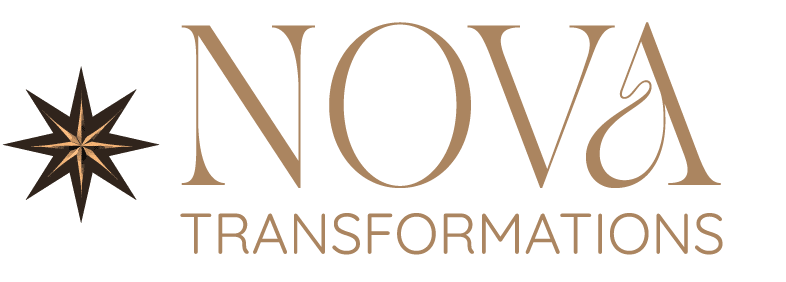Mindfulness breathing techniques for cravings success can help you navigate intense urges with greater calm and clarity. When you face a powerful craving, focused breathwork offers an accessible way to interrupt automatic reactions, anchor your attention in the present moment, and regain a sense of control. By exploring specific exercises—ranging from mindful breathing meditation to urge surfing—you build practical skills that support long-term recovery.
Whether you’re researching therapy options in Charlotte rehab programs or seeking at-home tools, you’ll find these methods integrate smoothly with individualized therapy plans and holistic approaches. You may already appreciate the benefits of mindfulness in addiction treatment; breath-centered practices amplify those gains, boosting emotional regulation, reducing stress, and enhancing your ability to manage triggers effectively.
In the following sections, you’ll learn how cravings arise, why mindful breathing works, which techniques to practice, and how to weave breathwork into your daily routine and treatment plan. Citations offer evidence for each approach, and internal links point you to related therapies that drive long-term change.
Understanding cravings and triggers
Cravings are powerful urges that drive you to seek relief in substances or behaviors. They stem from a complex interplay of brain circuitry, conditioned responses, and emotional states. When a cue—such as stress, an environmental trigger, or an intense emotion—activates conditioned neural pathways, you experience a strong desire to re-create past relief.
Judson Brewer describes cravings as conditioned cues paired with habitual reactions of aversion or craving [1]. Over time, these cues can hijack your attention, making it difficult to choose healthier responses. That’s where mindful breathing comes in. By redirecting your focus to the breath, you decouple the cue from its automatic response. You become an observer of the urge rather than a reactor.
Key factors in craving cycles:
- Cue exposure: people, places, or emotions that trigger recall of substance use
- Automatic response: conditioned craving or aversion that drives behavior
- Reinforcement: satisfying the craving strengthens the neural pathway
Mindful breathwork interrupts this cycle by:
- Shifting attention from external triggers to internal sensations
- Calming the sympathetic nervous system to reduce fight-or-flight reactions
- Cultivating nonjudgmental awareness, which prevents escalation of negative thoughts
As a result, you gain mental space to choose a healthier coping strategy, whether that’s engaging in therapy, calling a support person, or practicing another holistic modality like art and music therapy in addiction recovery.
Benefits of mindful breathing
Integrating breath-centered exercises into your recovery toolbox offers multiple advantages:
- Calms nervous system rapidly
Mindful breathing triggers the parasympathetic response, lowering heart rate and reducing stress hormones [2]. - Reduces craving intensity
Research shows a single session of mindful meditation can produce immediate reductions in cravings for food, cigarettes, and alcohol [3]. - Enhances emotional regulation
By practicing breath awareness, you build skills that overlap with broader emotional regulation skills in recovery, making it easier to tolerate discomfort without substance use. - Strengthens relapse prevention
Mindfulness-based interventions show medium to large effect sizes in reducing substance misuse and cravings, comparable to traditional cognitive strategies [3]. - Fosters self-awareness
Regular breathwork cultivates the capacity to notice subtle shifts in body and mind before a craving becomes overwhelming, improving your ability to respond early.
These benefits reinforce why many Charlotte rehab centers offer mindfulness practices alongside clinical therapies such as cognitive behavioral therapy and group support. You’ll find these exercises seamlessly complement modalities like stress management therapy for recovery and experiential therapy for emotional healing.
Practice core breathing techniques
Mindful breathing meditation
Mindful breathing meditation anchors your attention on the natural rhythm of the breath. This simple practice can be done anywhere, anytime you feel tension or an urge.
- Find a comfortable seated position, with your spine upright but relaxed.
- Close your eyes or soften your gaze.
- Direct your attention to the sensation of air entering and leaving your nostrils or belly rising and falling.
- When your mind wanders, gently guide it back to the breath without judgment.
- Continue for 5 to 10 minutes, gradually extending to 20 minutes as you build practice
According to HelpGuide, this technique grounds you in the present moment, offering relief from negative emotions and habitual thought patterns [4].
4-7-8 breathing technique
The 4-7-8 breath controls anxiety and cravings by regulating inhale and exhale durations.
- Exhale completely through your mouth, making a whoosh sound.
- Inhale quietly through your nose for a count of four.
- Hold your breath for a count of seven.
- Exhale through your mouth for a count of eight.
- Repeat the cycle four times
This approach decreases anxiety, improves sleep, and can reduce emotional reactivity when a craving arises [5].
Body scan meditation
A body scan boosts awareness of physical sensations, helping you detect early signs of stress or craving in your body.
- Lie down or sit comfortably with eyes closed.
- Bring attention to your toes, noticing any tension or sensation.
- Slowly move your focus up through each part of the body—feet, legs, torso, arms, neck, head—pausing to observe without trying to change anything.
- If you notice discomfort or restlessness, breathe into that area and allow it to soften
Stone River Recovery Center highlights that this practice deepens mind-body connection and supports early craving management [6].
Urge surfing technique
Urge surfing teaches you to ride cravings like waves, observing their rise and fall without reacting.
- When a craving hits, notice its intensity on a 1–10 scale.
- Observe physical sensations—tightness, restlessness—without judgment.
- Picture the craving as a wave, rising, peaking, and eventually receding.
- Breathe mindfully as you track the wave’s course
This method breaks the sense of inevitability around urges, helping you tolerate discomfort until it passes [6].
Grounding exercises
Grounding uses your five senses to pull attention back to the present moment, countering overwhelming cravings.
- Sight: name five things you can see
- Sound: identify four distinct sounds
- Touch: notice three textures under your fingertips
- Smell: recognize two scents in the air
- Taste: focus on one flavor in your mouth
By systematically engaging each sense, you shift away from mental loops that fuel cravings [6].
Mindful journaling
Journaling offers a nonjudgmental space to explore feelings and track patterns that trigger cravings.
- Set a timer for 10 minutes.
- Write freely about your current thoughts, emotions, and physical sensations.
- Reflect on any triggers or stressors that arose.
- Note shifts in craving intensity before and after writing
This practice fosters insight into recurring patterns, empowering you to anticipate and manage triggers more effectively [6].
Summary of core techniques
| Technique | Primary benefit | Ideal setting |
|---|---|---|
| Mindful breathing meditation | Present-moment awareness | Quiet space or daily routine |
| 4-7-8 breathing | Rapid anxiety and craving relief | Any moment of tension |
| Body scan meditation | Early detection of stress/cravings | At home or treatment center |
| Urge surfing | Enduring intense urges without reacting | During acute cravings |
| Grounding exercises | Immediate reconnection to now | Overwhelming situations |
| Mindful journaling | Insight into patterns | End of day reflection |
Integrate breathing into recovery
Establish a regular practice
To make breathwork habitual, schedule short daily sessions. You might:
- Start each morning with 5 minutes of mindful breathing
- Practice 4-7-8 breathing before meals or bedtime
- Do a brief body scan before a therapy group or session
Consistency builds muscle memory, so when cravings hit, breathwork becomes an automatic tool rather than a new skill.
Apply techniques during cravings
Plan how you’ll use each exercise when urges arise. For example:
- Use urge surfing in the first five minutes of a sudden craving
- Switch to grounding if you feel overwhelmed by anxiety
- End with mindful breathing meditation to restore calm
By mapping techniques to specific craving scenarios, you’ll respond more effectively under pressure.
Combine with holistic therapies
Mindful breathing works best as part of a comprehensive treatment plan. You may integrate it with:
- Using yoga and mindfulness in treatment to enhance mind-body connection
- Experiential therapy for emotional healing to process trauma with greater resilience
- Benefits of holistic addiction treatment programs for a multi-modal approach
- Group or individual sessions that focus on individualized therapy for long-term success
This synergy ensures you address underlying issues, build coping skills, and create a supportive network for lasting recovery.
Review evidence for mindfulness
A growing body of research supports breath-centered practices in addiction recovery:
- Preliminary studies indicate meditation benefits asthma, fibromyalgia, and anxiety, highlighting stress reduction pathways relevant to addiction [2].
- In a controlled laboratory study, mindful yogic breathing reduced cigarette cravings and withdrawal more than cognitive strategies or no treatment, delaying smoking by over 34 minutes on average [7].
- A review of 30 experimental studies found significant immediate reductions in cravings for food, alcohol, and cigarettes following mindfulness meditation sessions [3].
- Mindfulness-Based Interventions (MBIs), including breathwork, show medium to large effect sizes in craving reduction and relapse prevention, comparable to established therapies [3].
These findings underscore why many treatment centers incorporate mindfulness-based relapse prevention alongside evidence-based therapies such as DBT and CBT [8].
Take proactive next steps
You now have a toolkit of mindfulness breathing techniques to manage cravings effectively. To make the most of these methods:
- Commit to daily breathwork, even on low-stress days.
- Integrate planned exercises into your relapse prevention plan.
- Discuss breathwork options with your therapist or care team.
- Explore complementary modalities like art and music therapy in addiction recovery or trauma-informed care in addiction treatment.
If you’re seeking a Charlotte rehab program that offers comprehensive care, including breath-centered practices, reach out to treatment specialists today. By combining these techniques with personalized therapy, you’ll build the resilience and self-awareness necessary for lasting recovery.
References
- (Psychology Today)
- (Mayo Clinic)
- (Samba Recovery)
- (HelpGuide.org)
- (Gundersen Health)
- (Stone River Recovery Center)
- (NCBI)
- (dbt vs cbt for substance use disorders)








